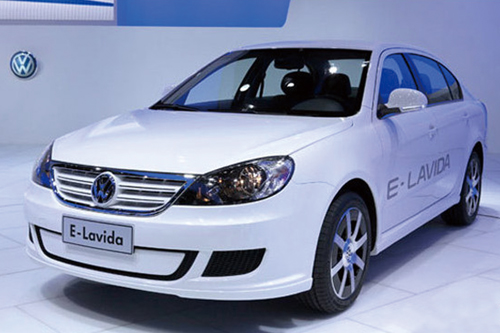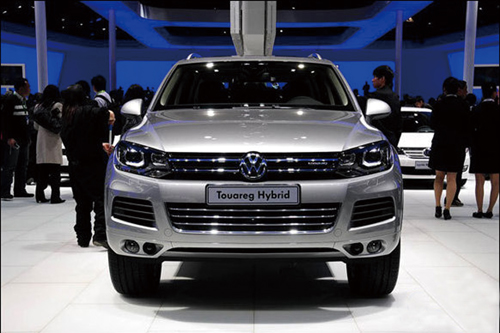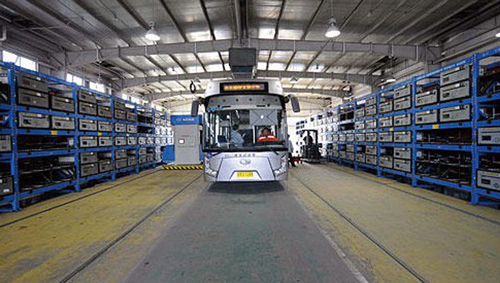China Drives New-energy Vehicle Industry Amid Challenges
2012/04/05 | By CENSAs one of the most aggressive among global counterparts, the Chinese government continues to drive the development of its new-energy vehicle industry.
In January 2012, the Chinese government has removed in the 5th edition of the "Foreign-funded Industry Guide" the "assembled vehicle" from the "encouraging" categories in the manufacturing sector for special development, instead including it among the "permission" categories, meaning that assembled vehicle operators applying for incentives may not be favored as before.

Clearly the signs are that, according to industry insiders, new-energy vehicles and key parts are targeted by the Chinese central government for special development, guiding the core direction for the Chinese automotive industry.
The general consensus in China is that, even after vigorous efforts, a 10-year technological gap exists between China's automotive industry and those in industrially advanced nations, but not so in the new-energy vehicle field, which is still nascent globally, granting China the chance to play a crucial role in investment, incentive and the massive domestic market.
After a few years of feverish development in the global new-energy vehicle market, China has set in motion more significant moves in 2012.
Policy Support
The National Development and Reform Committee announced in April 2011 in the "Foreign-funded Industry Guide" that the Chinese government requires foreign investment to be less than 50% in Chinese enterprises engaged in new-energy vehicles and key parts, showing the nation's determination to control the industry. However, some industry experts doubt the practicality of such shareholding-limit, because the relatively weaker Chinese vehicle-parts industry is not due to foreign investment rules, but long-term biased industry-development strategy focusing on assembled vehicles rather than parts. The past 30 years or so of development of China's automotive industry has taught that foreign-Chinese joint ventures can not really bring changes to the nation's market, shareholding or own-brand.

Chinese automaker BYD chairman Chuanfu Wang, a personality in the new-energy vehicle field, says that 2012 is a watershed. In conjunction with the gradual realization of government's support policies and increasingly sound EV recharging infrastructure, the penetration of new-energy vehicles will shift to higher gears in 2012 and 2013.
And the Chinese central government will not only subsidize new-energy vehicle industry development, but will also raise operation costs of traditional internal combustion engine (ICE) automobiles. So new-energy vehicles enjoy tax breaks while taxes rise for big displacement vehicles, which should negatively impact sales of ICE vehicles.
Targeting E-Vehicles
China's "12th Five-Year Plan for Electric Car Technology Development," just promulgated by the Chinese government in March 2012, is another effort to motivate cleaner vehicle development, which clearly unveils China's policy to develop especially pure-electric vehicles rather than other types of new-energy ones.
The five-year plan also makes its core the development of power battery modules, aiming to make technological breakthroughs in lithium-ion cells for EVs, with key targets including localized production of key battery materials, installation of automatic battery mass-production lines, modularization, systemization and standardization of power-cell modules.
Battery Technology Development
To meet demand for longer cruise range and higher horsepower output, a group of Chinese players are working tirelessly on this high-potential market to make better, newer products, and replace nickel-hydrogen cells with lithium-ion counterparts.
In addition, there are already different new-energy vehicle key-parts industry clusters in China, including Guangdong Province with over 100 enterprises, with other major cities and provinces as Beijing, Chongqing, Shanghai, Wuhan, Jilin, Jinan having also mapped out plans for new-energy vehicle industry bases.

Jen Yung, vice manager at the New-energy Car Co. under Changan Automobile Group, says that reliability and consistency of mainly battery of new-energy vehicle parts supplied by domestic enterprises remains an issue for automakers, while local makers till need to improve mass-production techniques. And without yet achieving economy of scale, local makers need three to five months to deliver parts compared to two weeks by bigger carmakers, which is further exasperated by questionable after-sales service.
Chinese makers' technologies in battery-pack and heat management still lag those of international counterparts, though China-made cells are of adequate quality. Chinese companies in the battery industry should closely cooperate with new-energy vehicle makers and parts suppliers to form strong strategic alliances, says Jen.
Higher Prices
Industry sources say that higher cost, not current technology, is the major hindrance to practical new-energy vehicles powered by lithium-ion cells. Prices of pure-electric cars typically are about 15,000 euro more than ICE counterparts, making speed of cost-cutting critical to further popularization of new-energy vehicles globally.
The government plays the pivotal role in boosting adoption of new-energy vehicles. The authorities have two tasks: designating clean-air zones in major cities by 2016 or 2018 to allow only zero-emission vehicles, and providing a certain level of subsidies to enterprises engaging in EV-related R&D. Another equally important task is to build extensive vehicle recharging infrastructure to minimize “range anxiety,” an issue recognized to deter buying of new-energy vehicles.
Though the terminal applications are still filled with many uncertainties, says Hsieh Kang-en, president of Galaxy Resources Co., the lithium-ion battery industry is a promising future for global players. In 2015, some 500,000 EVs are expected to be operational, equal to a demand for 12.5 million KW of power cells.




